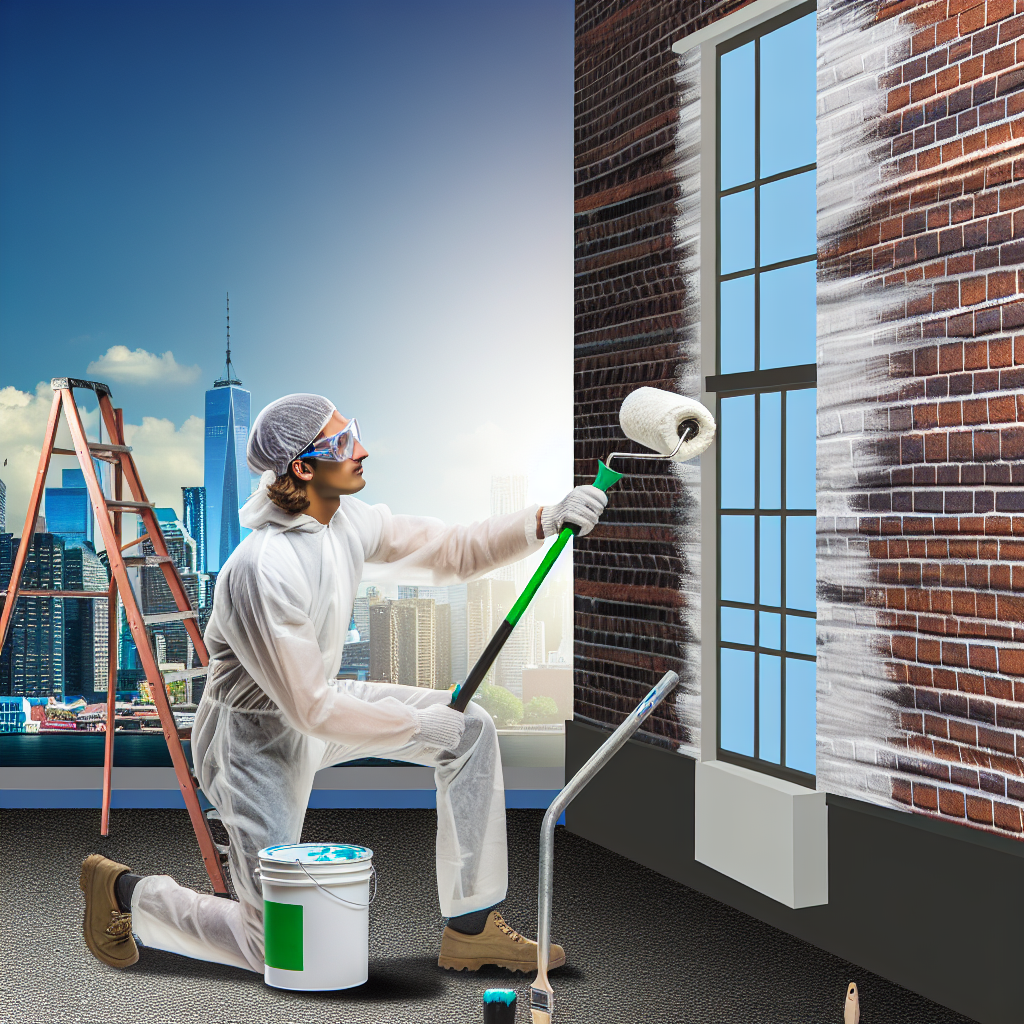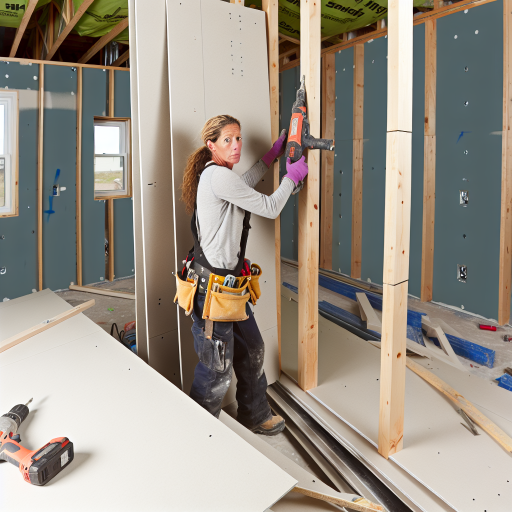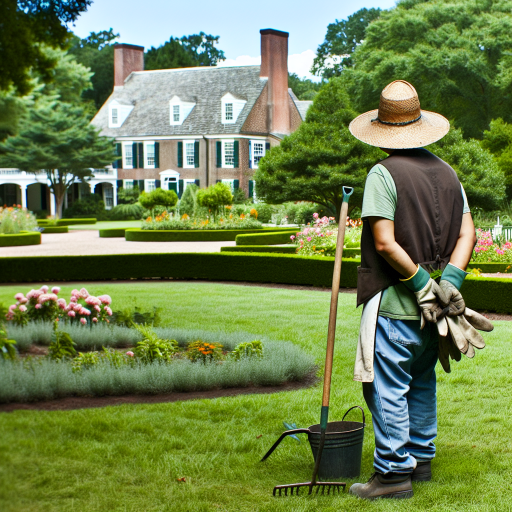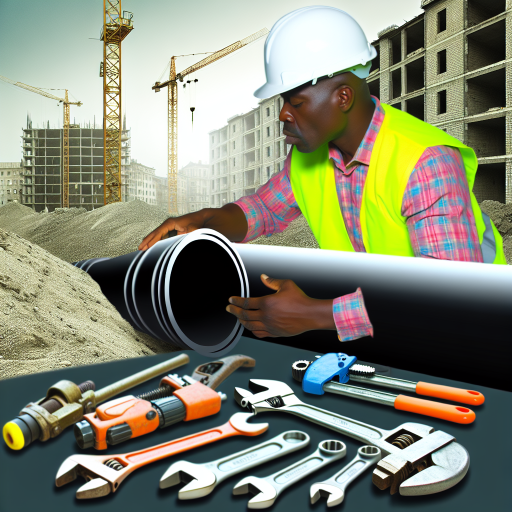Introduction:
Ensuring safety on the job is crucial for painters due to the numerous hazards and risks involved.
It is essential to prioritize safety to prevent accidents and injuries.
Protective Gear:
Wear protective clothing, gloves, safety goggles, and a respirator to shield yourself from hazardous fumes and chemicals.
Ladder Safety:
Check the stability of the ladder before climbing.
Place it on a flat surface and always maintain three points of contact.
Ventilation:
Ensure proper ventilation in the work area to minimize exposure to paint fumes.
Use fans or open windows for better air circulation.
Tool Maintenance:
Regularly inspect and maintain your painting tools to prevent malfunctions.
Clean them properly after each use to ensure efficiency.
Chemical Safety:
Handle paint and solvents carefully, following manufacturer instructions.
Store them in a well-ventilated area away from heat sources.
Electrical Safety:
Avoid using damaged or frayed cords.
Always disconnect power tools when not in use and do not overload electrical outlets.
Fire Safety:
Keep a fire extinguisher nearby and know how to use it.
Avoid smoking in the work area and dispose of paint rags properly.
First Aid Kit:
Have a fully stocked first aid kit on site in case of minor injuries.
Know basic first aid procedures for cuts, burns, or other accidents.
Worksite Cleanliness:
Keep the work area clean and organized to prevent trips and falls.
Remove debris, paint cans, and other obstacles from the floor.
Training and Education:
Stay informed about safety protocols and attend training sessions regularly.
Transform Your Career Today
Unlock a personalized career strategy that drives real results. Get tailored advice and a roadmap designed just for you.
Start NowKeep up to date with OSHA regulations and best practices for painters.
Use Personal Protective Equipment (PPE):
Wearing appropriate PPE such as goggles, gloves, and masks is crucial.
PPE plays a vital role in protecting against chemical exposure, injuries, and respiratory issues.
For different painting tasks, specific recommendations for the type of PPE needed are:
- Goggles: Always wear safety goggles to protect your eyes from splashes of paint or chemicals.
- Gloves: Use chemical-resistant gloves to shield your hands from harmful substances in paints.
- Masks: Respirators or masks are essential to prevent inhalation of paint fumes and particles.
- Coveralls or Aprons: Wear protective clothing to avoid skin contact with paint.
Remember, PPE should always be worn correctly and consistently to ensure your safety on the job.
Ensure Proper Ventilation:
Inhaling paint fumes can be dangerous to your health.
Always work in well-ventilated areas to reduce risks.
Use fans, open windows, or exhaust systems to improve air circulation.
Proper ventilation is essential for respiratory health and overall safety.
Lack of ventilation can lead to dizziness, headaches, or nausea.
Long-term exposure to paint fumes can cause serious health issues.
Protect yourself by wearing a respirator or mask while painting.
Prioritize your safety by ensuring proper ventilation in your workspace.
Don’t compromise on ventilation, even when working on smaller projects.
Take breaks in well-ventilated areas to avoid inhaling harmful fumes.
Find Out More: Innovations in Masonry Materials and Technology
When working as a painter, it’s important to handle and store chemicals safely to protect yourself on the job.
Follow these guidelines:
Guidelines for Storing and Handling Chemicals:
- Store paint, solvents, and other chemicals in a well-ventilated area away from heat and flames.
- Keep chemicals tightly sealed in their original containers to prevent spills and leaks.
- Use appropriate personal protective equipment, such as gloves and goggles, when handling chemicals.
Importance of Reading Manufacturer’s Instructions:
- Always read and follow the manufacturer’s instructions for proper storage and handling of chemicals.
- Pay attention to any warnings or precautions outlined on the product labels to avoid accidents.
- Seek clarification from your supervisor or a safety professional if you are unsure about how to handle a particular chemical.
Risks of Chemical Exposure and Ways to Minimize Them:
- Chemical exposure can lead to skin irritation, respiratory issues, and other health problems.
- Minimize risks by using less toxic alternatives, if possible, and following proper safety protocols.
- If you experience symptoms of chemical exposure, such as dizziness or nausea, seek medical attention immediately.
By handling and storing chemicals safely, you can protect yourself from the potential risks associated with working as a painter.
Showcase Your Business Today
Reach thousands of readers actively exploring professional services. Publish your business profile and grow your audience now.
Publish NowAlways prioritize your safety and well-being on the job.
See Related Content: Ironworker Salary Expectations and Career Growth
Safety Tips for Painters
When working as a painter, safety should always be a top priority.
It is crucial to protect yourself on the job.
Avoid Slips, Trips, and Falls:
- Address common hazards such as wet paint, dropped tools, and cluttered work areas.
- Recommend keeping workspaces clean and organized to prevent accidents.
- Discuss the importance of using ladders and scaffolds safely to avoid falls.
Slips, trips, and falls are some of the most common accidents that can occur on a painting job.
These accidents can lead to serious injuries.
It is essential to take steps to prevent them.
Address Common Hazards:
Wet paint can create a slippery surface.
Be mindful of any areas where paint has been recently applied.
Take caution when walking on these surfaces.
Dropped tools and cluttered work areas can also pose a risk for slips and trips.
Always be aware of your surroundings.
Make sure to keep your work area clean and organized.
Keep Workspaces Clean and Organized:
By keeping your work area tidy, you can minimize the risk of accidents.
Make it a habit to clean up spills and put away tools when they are not in use.
Organizing your tools and materials can help you work more efficiently.
You won’t have to search for what you need in a cluttered workspace.
This can also help prevent accidents caused by tripping over tools or materials.
Use Ladders and Scaffolds Safely:
When working at heights, it is essential to use ladders and scaffolds properly.
Make sure that ladders are secure and on stable ground before climbing them.
When using scaffolds, follow the manufacturer’s instructions.
Ensure that they are set up correctly.
Always wear appropriate fall protection equipment.
Doing so will help prevent serious injuries.
By following these safety tips, you can protect yourself while on the job as a painter.
Safety should always come first to ensure a productive, incident-free work environment.
Gain More Insights: How to Maintain Metal Fences for Longevity and Beauty
Practice Safe Lifting Techniques:
Proper lifting techniques are crucial to prevent back injuries on the job.
When lifting heavy paint cans, equipment, or materials, follow these tips:
- Use your legs, not your back, to lift.
- Bend your knees and keep your back straight.
- Hold the object close to your body.
- Avoid twisting your body while lifting.
- Ask for help if the object is too heavy to lift alone.
Poor lifting practices can have a long-term impact on a painter’s health.
Over time, repeated improper lifting can lead to chronic back pain and injuries.
By following safe lifting techniques, painters can protect themselves from these risks and ensure their long-term well-being.
Importance of Safe Lifting Techniques
Practicing safe lifting techniques is essential for painters to protect themselves from back injuries.
By following the tips provided and being cautious when handling heavy objects, painters can prevent long-term damage to their bodies.
Safety always comes first on the job, and taking the necessary precautions can make a significant difference in the longevity of a painter’s career.
Stay safe, lift smart, and keep painting!
Uncover the Details: Boilermaker Industry Conferences and Events

Be Mindful of Electrical Safety:
When working as a painter, it’s crucial to pay attention to electrical safety to protect yourself on the job.
Here are some key points to consider:
- Using electrical equipment near water or wet surfaces poses a significant risk of electric shock and even electrocution. Always be cautious and avoid working in such conditions.
- It is recommended to use extension cords and power tools that are specifically designed for outdoor use. These tools are constructed to withstand outdoor elements and reduce the risk of electrical hazards.
- To avoid electrical shocks and fires while painting, here are some tips to follow:
- Inspect all electrical cords and tools for any damage before each use. If you notice any frayed wires or exposed parts, do not use the equipment.
- Avoid overloading electrical outlets by plugging in too many devices at once. This can lead to overheating and electrical fires. Use power strips or surge protectors to distribute the load.
- When using power tools, always handle them with dry hands to prevent electric shock. Make sure to unplug the tools before making any adjustments or cleaning them.
- Keep all electrical cords and power tools away from water, paint, and other liquids to prevent shorts and electrical malfunctions. Store them in a dry area when not in use.
- If you need to work at heights or near power lines, always be aware of your surroundings. Maintain a safe distance from electrical sources to avoid accidents and injuries.
- In case of an electrical emergency, know the location of the circuit breaker or fuse box in your work area. Familiarize yourself with the proper procedures for shutting off power in case of an accident.
- Inspect all electrical cords and tools for any damage before each use. If you notice any frayed wires or exposed parts, do not use the equipment.
By following these safety precautions and guidelines, you can protect yourself from electrical hazards while working as a painter.
Showcase Your Business Today
Reach thousands of readers actively exploring professional services. Publish your business profile and grow your audience now.
Publish NowRemember that safety should always be your top priority on the job.
Take Breaks and Stay Hydrated:
Painting is physically demanding and can lead to exhaustion.
To avoid fatigue, it is essential to take regular breaks.
During breaks, make sure to rest and stretch your muscles.
Staying hydrated is crucial to prevent dehydration while painting.
Dehydration can lead to heat-related illnesses, so drink plenty of water.
Consider setting a timer to remind yourself to take breaks.
Use breaks to rehydrate and replenish your energy levels.
Stretching during breaks can help prevent stiffness and muscle strain.
Remember to listen to your body and take breaks when needed.
Making hydration a priority can improve your overall painting experience.
Know What to Do in Case of an Emergency:
Recognize symptoms of common painting-related emergencies such as exposure to hazardous fumes.
Respond promptly by removing yourself from the area and seeking fresh air.
Call emergency services if necessary or seek medical attention if symptoms persist.
First Aid Kit and Emergency Contact Information:
Always have a fully stocked first aid kit on hand in case of minor injuries or accidents.
Include items such as bandaids, antiseptic wipes, gauze, and gloves in your first aid kit.
Keep a list of emergency contact numbers easily accessible in case of a serious incident.
Make sure all team members know where the first aid kit is located on the job site.
Importance of Training and Preparation:
Provide thorough training to all painters on how to respond to emergencies safely.
Conduct regular drills to practice emergency procedures and ensure everyone knows what to do.
Emphasize the importance of staying calm and following protocol during emergencies.
Update emergency contact information regularly and make sure everyone is aware of any changes.
By following these safety tips and being prepared for emergencies, painters can protect themselves and their coworkers on the job.
Key Safety Tips for Painters
Painters must prioritize safety on the job.
It is important to follow safety guidelines.
Using personal protective equipment is essential.
Inspecting tools and materials regularly can prevent accidents.
Proper ventilation helps reduce exposure to harmful fumes.
Staying hydrated and taking breaks ensures sustained focus.
Finally, always keep emergency contacts available.
Additional Resources
Renovation, Repair and Painting Program: Contractors | US EPA
Workplace Posters | U.S. Department of Labor
[E-Books for Sale]
The Big Book of 500 High-Paying Jobs in America: Unlock Your Earning Potential
$19.99 • 500 High-Paying Jobs • 330 pages
Explore 500 high-paying jobs in America and learn how to boost your career, earn more, and achieve success!
See All 500 High-Paying Jobs of this E-Book
1001 Professions Without a Degree: High-Paying American Jobs You Can Start Now
$19.99 • 1001 Professions Without a Degree • 174 pages
Discover 1001 high-paying jobs without a degree! Unlock career tips, skills, and success strategies for just $19.99!




